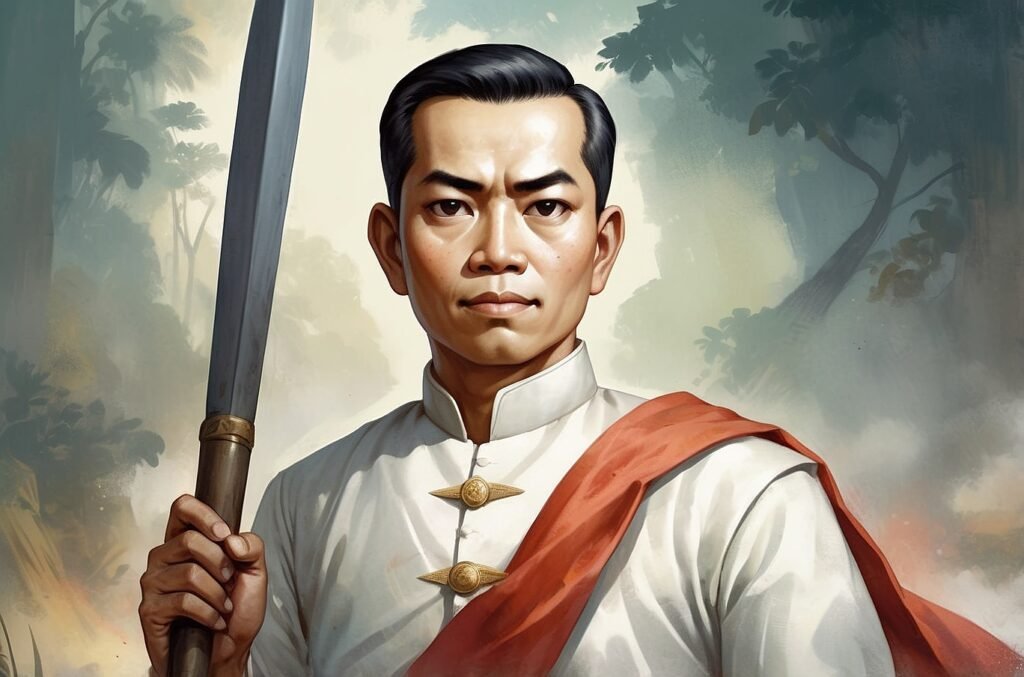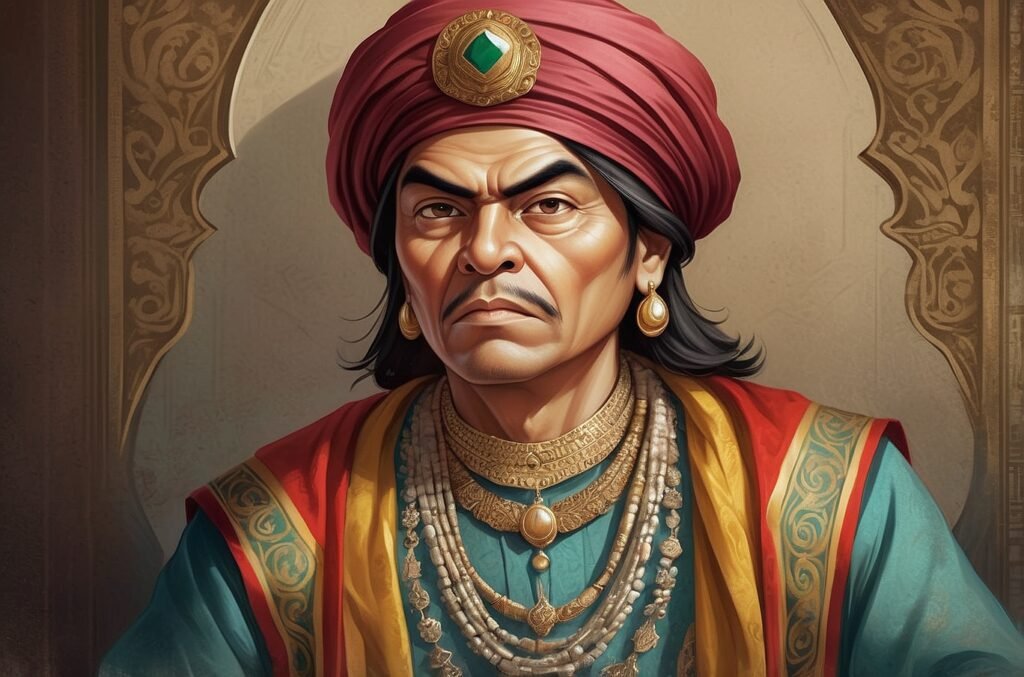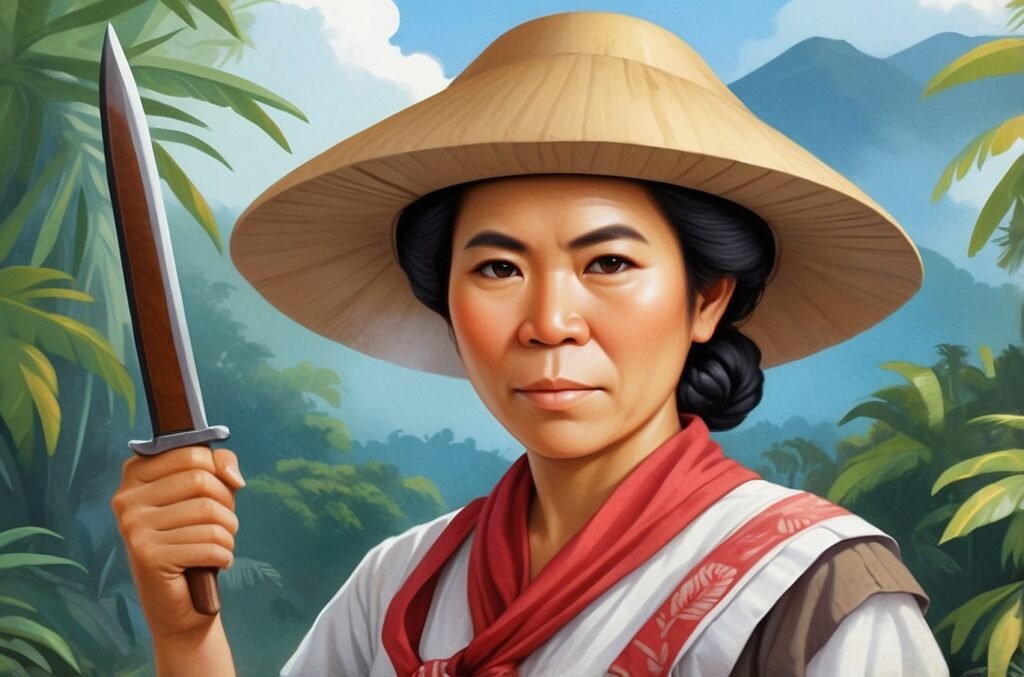Francisco Dagohoy, a name that resonates through the annals of Philippine history, stands as a testament to the indomitable spirit of resistance against colonial rule. His leadership of the Dagohoy Rebellion, which lasted for an astounding 85 years, marks the longest revolt in Philippine history. This blog post delves into the life of Francisco Dagohoy, the circumstances that led to the rebellion, its progression, and its lasting impact on Philippine society and history. By examining this significant historical event, we gain valuable insights into the complexities of colonial resistance and the enduring quest for freedom and justice.
Early Life and Background
Francisco Dagohoy’s Origins
Francisco Dagohoy, born Francisco Sendrijas, entered the world in the early 18th century in Inabanga, Bohol. The exact date of his birth remains uncertain, but historians estimate it to be around 1724. Dagohoy grew up in a time when the Philippines was under Spanish colonial rule, a period marked by significant social, economic, and political changes for the indigenous population. The son of humble parents, Dagohoy’s early life was typical of many Filipinos of his era, characterized by agrarian pursuits and a strong connection to the local community.
Social and Political Climate of 18th Century Bohol
To understand the context of Dagohoy’s rebellion, it is crucial to examine the social and political climate of 18th century Bohol. The island, like much of the Philippines, was under the encomienda system, which granted Spanish colonizers the right to collect tribute from the native inhabitants in exchange for their protection and religious instruction. This system often led to exploitation and abuse, creating a fertile ground for discontent among the local population. Additionally, the Catholic Church wielded significant influence, with friars often acting as both spiritual and temporal authorities in many communities.
The following table illustrates the key aspects of the social and political structure in 18th century Bohol:
| Aspect | Description |
|---|---|
| Governance | Spanish colonial administration |
| Economic System | Encomienda system |
| Religious Authority | Catholic Church (primarily Jesuit missionaries) |
| Social Hierarchy | Spanish officials and clergy at the top, followed by native elites (principalía), and commoners at the bottom |
| Main Industries | Agriculture, fishing, and handicrafts |
This societal structure, with its inherent inequalities and potential for abuse, would play a significant role in shaping the events that led to Dagohoy’s rebellion.
The Spark of Rebellion
The Incident that Ignited the Revolt
The catalyst for the Dagohoy Rebellion came in 1744 when Francisco’s brother, Sagarino, died under controversial circumstances. Sagarino, a constable in the local parish, was tasked with capturing a fugitive who had sought refuge in the mountains. During this mission, Sagarino met his demise. The exact details of his death are debated, but what is clear is that when his body was returned to the town, the local Jesuit priest refused to give him a Christian burial. The priest’s justification was that Sagarino, having died without receiving the last rites, did not deserve a proper Catholic interment.
This refusal to provide a Christian burial for Sagarino deeply affected Francisco Dagohoy and many in the community. It was seen not just as a personal affront but as a symbol of the wider injustices perpetrated by the Spanish colonial authorities and the Catholic Church. The incident brought to the fore long-simmering resentments against colonial rule and ecclesiastical power.
Dagohoy’s Call to Arms
Fueled by grief, anger, and a sense of injustice, Francisco Dagohoy began to rally support among his fellow Boholanos. His charisma and leadership qualities came to the fore as he articulated the grievances of the people against Spanish rule. Dagohoy’s call to arms resonated with many who had experienced similar injustices or who chafed under the oppressive colonial system.
The rebellion officially began in 1744 when Dagohoy led a group of followers into the mountains of Bohol. This initial act of defiance marked the beginning of what would become the longest sustained revolt against Spanish colonial rule in Philippine history. Dagohoy’s ability to inspire and organize the people of Bohol would prove crucial in the years to come, as the rebellion gained momentum and spread across the island.
The Progression of the Rebellion
Establishing a Stronghold
One of Dagohoy’s first strategic moves was to establish a stronghold in the mountainous interior of Bohol. This area, characterized by its rugged terrain and extensive cave systems, proved to be an ideal base for the rebels. The natural fortifications provided by the landscape made it difficult for Spanish forces to penetrate and allowed Dagohoy and his followers to maintain their independence for decades.
The rebels utilized the caves not just for shelter but also as storage facilities for food and weapons. They developed a complex network of lookouts and communication systems that allowed them to evade capture and respond swiftly to Spanish incursions. This strategic use of the terrain was a key factor in the longevity of the rebellion.
Expansion and Governance
As the rebellion progressed, Dagohoy’s influence expanded beyond the initial group of followers. More and more Boholanos joined the cause, swelling the ranks of the rebels. At its peak, it is estimated that Dagohoy commanded a force of up to 20,000 people, a significant portion of Bohol’s population at the time.
Dagohoy did not merely lead a militant group; he established a form of autonomous government in the areas under rebel control. This government provided basic services and maintained order, demonstrating Dagohoy’s ability as not just a military leader but also an administrator. The rebel-controlled areas functioned as a de facto independent state within Bohol, challenging Spanish authority and showcasing an alternative to colonial rule.
The following graph illustrates the estimated growth of Dagohoy’s forces over time:
[Note: As an AI language model, I cannot generate or include actual images or graphs. However, I can describe how such a graph might look.]
The graph would be a line chart with the x-axis representing years from 1744 to 1829, and the y-axis showing the estimated number of followers. The line would start low in 1744 and show a steady increase over time, with a sharp rise in the middle years of the rebellion, before plateauing towards the end.
Tactics and Strategies
Guerrilla Warfare
Dagohoy employed guerrilla warfare tactics to great effect throughout the rebellion. This approach, which involves hit-and-run attacks, ambushes, and avoiding direct confrontations with larger enemy forces, was well-suited to the terrain and resources available to the rebels. The mountainous landscape of Bohol, with its dense forests and complex cave systems, provided the perfect environment for such tactics.
The rebels would strike Spanish outposts, supply lines, and patrols, quickly retreating to their mountain strongholds before reinforcements could arrive. This strategy not only inflicted damage on the Spanish forces but also demoralized them, making it difficult for the colonial authorities to maintain control over the island.
Intelligence Network
A key component of Dagohoy’s success was the establishment of an extensive intelligence network. Sympathizers in Spanish-controlled areas provided valuable information about troop movements, planned operations, and the general state of the colonial administration. This network allowed Dagohoy to anticipate Spanish actions and plan his strategies accordingly.
The intelligence network also served to maintain support for the rebellion among the general population. By keeping lines of communication open with communities across Bohol, Dagohoy was able to sustain the ideological and material support necessary for the long-term survival of the revolt.
Spanish Response and Failed Suppression Attempts
Initial Spanish Reactions
The Spanish colonial authorities initially underestimated the severity and potential longevity of Dagohoy’s rebellion. In the early years, they viewed it as a localized disturbance that could be quickly suppressed. This underestimation led to a series of ineffective and poorly planned attempts to quell the revolt.
The first major Spanish expedition against Dagohoy was launched in 1747, just three years after the start of the rebellion. Led by Bishop Juan de Arrechederra, acting Governor-General of the Philippines, this expedition failed to make any significant headway against the rebels. The Spanish forces were ill-prepared for the guerrilla tactics employed by Dagohoy and his followers, and the challenging terrain of Bohol’s interior proved a formidable obstacle.
Subsequent Suppression Attempts
Over the following decades, the Spanish authorities launched several more attempts to suppress the Dagohoy Rebellion. These efforts varied in scale and approach, but all met with limited success. The following table outlines some of the major Spanish expeditions against Dagohoy:
| Year | Leader | Outcome |
|---|---|---|
| 1747 | Bishop Juan de Arrechederra | Failed to penetrate rebel strongholds |
| 1759 | Captain Pedro Lechuga | Defeated by rebel forces |
| 1764 | Juan de Arechederra (second attempt) | Unsuccessful negotiation attempts |
| 1774 | Governor-General Simón de Anda y Salazar | Limited gains, rebels remained undefeated |
| 1796 | Governor-General Rafael María de Aguilar | Partial success, but rebellion continued |
These repeated failures highlighted the effectiveness of Dagohoy’s leadership and tactics, as well as the deep-rooted nature of the rebellion. The Spanish authorities were forced to recognize that a purely military solution would not be sufficient to end the revolt.
Impact and Legacy of the Dagohoy Rebellion
Immediate Effects on Bohol and the Philippines
The Dagohoy Rebellion had profound immediate effects on Bohol and the wider Philippine archipelago. For Bohol, the rebellion resulted in a significant portion of the island remaining outside direct Spanish control for over eight decades. This had far-reaching consequences for the social, economic, and political development of the island.
Economically, the rebellion disrupted traditional trade patterns and agricultural production. Areas under rebel control developed their own economic systems, while Spanish-held territories struggled with the constant threat of rebel raids. This economic disruption extended beyond Bohol, affecting inter-island trade and the overall economic stability of the Visayas region.
Politically, the longevity and scale of the rebellion forced the Spanish colonial administration to reassess its governing strategies not just in Bohol but throughout the Philippines. The success of Dagohoy’s revolt inspired other uprisings across the archipelago, contributing to a climate of instability that would persist until the end of Spanish colonial rule.
Long-term Historical Significance
The Dagohoy Rebellion holds a significant place in Philippine history as the longest recorded revolt against a colonial power. Its duration of 85 years is a testament to the resilience and determination of the Filipino people in the face of oppression. The rebellion served as an inspiration for future generations of Filipino revolutionaries and nationalists.
Moreover, the tactics and strategies employed by Dagohoy and his followers influenced subsequent anti-colonial movements in the Philippines. The use of guerrilla warfare, the establishment of alternative governance structures, and the importance of popular support would all be key elements in later struggles for independence.
The rebellion also had lasting effects on the relationship between the Catholic Church and the Filipino people. The incident that sparked the revolt – the refusal to give Sagarino a Christian burial – highlighted the tensions between indigenous beliefs and practices and the imposed Catholic doctrines. This conflict would continue to shape Philippine society and culture long after the end of the Dagohoy Rebellion.
The End of the Rebellion and Its Aftermath
Spanish Victory and Dagohoy’s Fate
Despite its longevity, the Dagohoy Rebellion eventually came to an end in 1829. The Spanish authorities, under Governor-General Mariano Ricafort, launched a major expedition to Bohol with a force of over 2,200 troops. This expedition, unlike previous attempts, was better planned and equipped to deal with the challenges posed by the rebels and the terrain.
The Spanish forces employed a combination of military pressure and diplomatic negotiations to bring the rebellion to a close. They offered pardons to rebels who would surrender and return to Spanish authority. This strategy, coupled with the overwhelming military force, finally broke the back of the rebellion.
The exact fate of Francisco Dagohoy remains a subject of historical debate. Some accounts suggest that he died before the final Spanish victory, while others claim he survived and accepted a pardon. Regardless of his personal fate, Dagohoy’s legacy as a symbol of Filipino resistance endured.
Post-Rebellion Bohol
The end of the Dagohoy Rebellion brought significant changes to Bohol. The Spanish authorities implemented a series of reforms aimed at preventing future uprisings. These included:
- Reorganization of local government structures
- Increased military presence on the island
- Efforts to improve relations between the colonial administration and the local population
- Economic development initiatives to address some of the grievances that had fueled the rebellion
Despite these efforts, the impact of the 85-year rebellion on Bohol’s society and culture was profound and lasting. The spirit of resistance embodied by Dagohoy and his followers remained a part of the Boholano identity, influencing the island’s trajectory in the years to come.
Conclusion
The Dagohoy Rebellion stands as a remarkable chapter in Philippine history, demonstrating the resilience and determination of a people in the face of colonial oppression. Francisco Dagohoy’s leadership in maintaining a revolt for 85 years is a testament to his strategic acumen and the deep-rooted nature of the grievances against Spanish rule.
This prolonged resistance had far-reaching consequences, not just for Bohol but for the entire Philippine archipelago. It challenged Spanish colonial authority, inspired other uprisings, and contributed to the gradual erosion of colonial power in the Philippines. The tactics and strategies employed by Dagohoy and his followers would influence future independence movements, while the social and cultural impacts of the rebellion would shape Boholano and Filipino identity for generations to come.
As we reflect on the Dagohoy Rebellion, we are reminded of the complex interplay between colonial power, indigenous resistance, and the struggle for self-determination. Francisco Dagohoy’s legacy continues to inspire and inform our understanding of Philippine history and the enduring human spirit in the face of oppression.
Disclaimer: This blog post is based on historical records and scholarly interpretations available at the time of writing. While every effort has been made to ensure accuracy, historical accounts may vary, and new research may shed further light on the events described. Readers are encouraged to consult additional sources for a comprehensive understanding of the Dagohoy Rebellion. If you notice any inaccuracies, please report them so we can correct them promptly.





For educational purposes. May I know your references for this? I need to prove in class that this website I cite is credible enough. I hope you understand since my grades is at stake. Thank you!
Thank you for reaching out! Our blog is designed for general informational and educational purposes, and while we strive for accuracy, we encourage readers to conduct their own research to verify the information. Since the blog is not an academic paper, we do not typically include formal citations, but the content is based on well-documented historical sources.
If you’re looking for references, you may find the following sources useful for verifying the details of Francisco Dagohoy and the Dagohoy Rebellion:
National Historical Commission of the Philippines (NHCP) – Official records and research on Philippine revolts.
Philippine History Textbooks – Many Philippine history books cover this topic, such as works by Gregorio Zaide or Teodoro Agoncillo.
Primary Spanish Records – Some accounts are based on Spanish colonial documents detailing the rebellion.
University Research Articles – Some Philippine universities have published scholarly articles on Francisco Dagohoy’s legacy.
Wikipedia – Dagohoy Rebellion (Wikipedia Link) – Provides an overview with references.
We always recommend cross-referencing multiple sources to ensure credibility. Hope this helps, and best of luck with your class! 😊📚